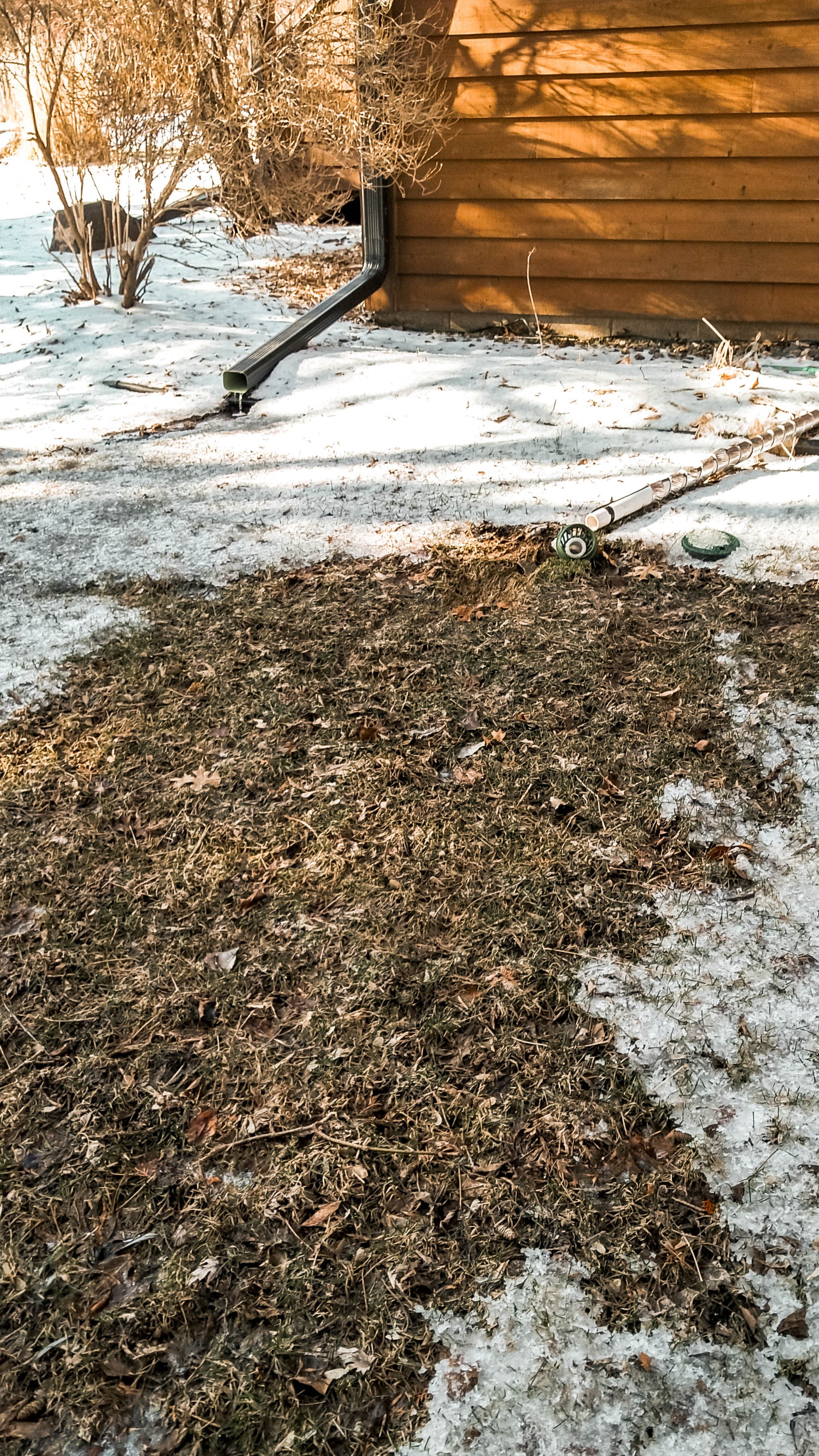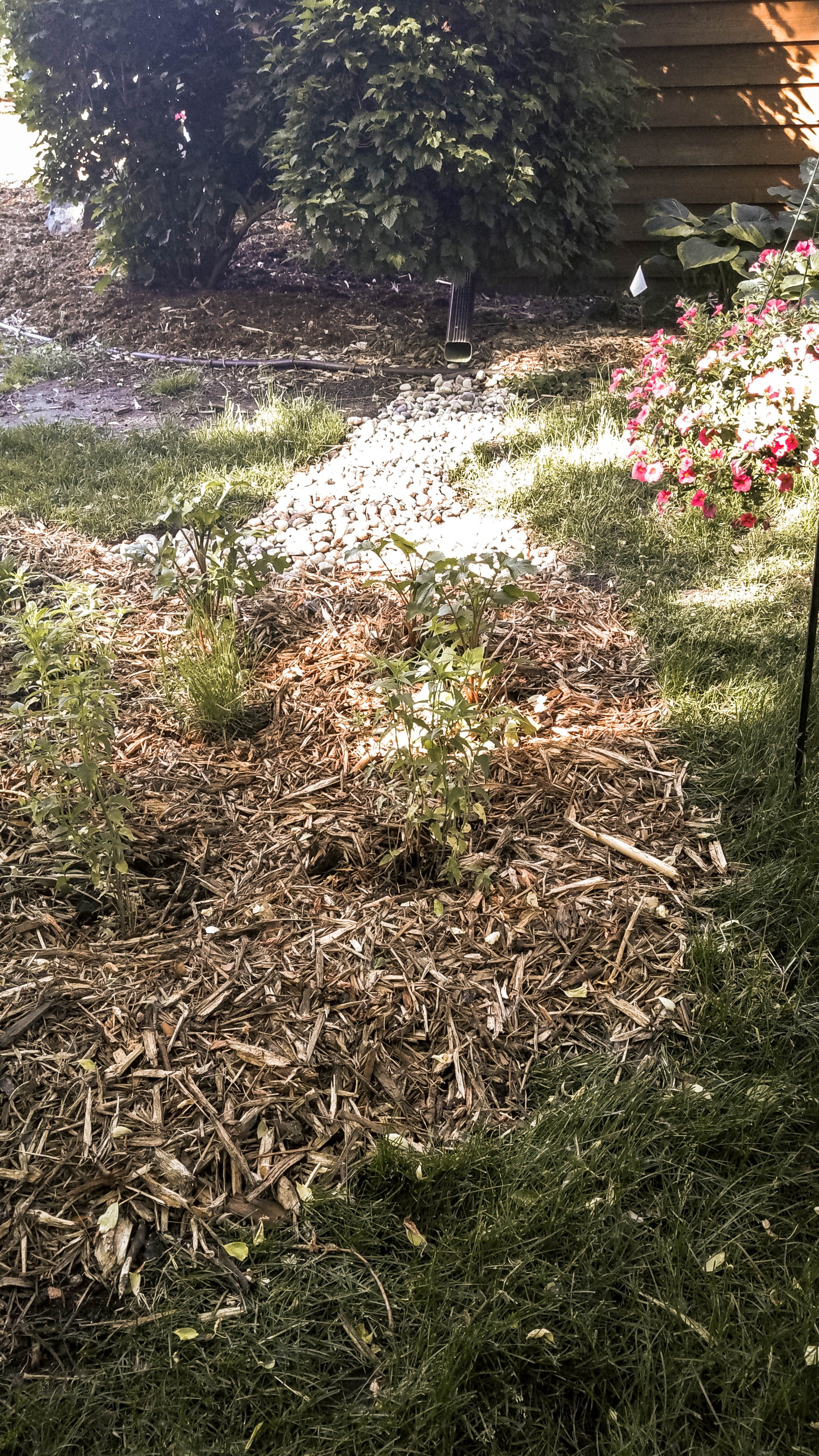Landscaping to Protect Natural Areas – Raingardens
Given the lengthy stay of the snow cover this year, many of us are predicting a wet, soggy spring. With snowmelt comes runoff, and with runoff comes one oft-forgotten source of pollution. When water (from snowmelt, rain, or human-based activities like watering yards, washing cars, etc.) runs across the landscape, it picks up sediment, nutrients, and pollutants as it goes. This brings us to our next focus on landscaping to protect natural areas—raingardens!
Every year, hundreds of gallons of runoff flows into stormwater systems and natural water reservoirs like lakes, streams, and wetlands. Pollutants from salt, silt, yard clippings, fertilizer, pet waste, oil, (you name it) gets dumped into natural areas with it. The severity of this pollution can seem minimal but the cumulation of all the little runoffs over the entire landscape quickly adds up. Runoff pollution is detrimental to natural water habitats, and the plants and wildlife that live there. At extreme levels, pollution from runoff can impact water quality, increasing nutrient loading that triggers algae blooms and fish kill. It can also lead to excess sediment dumping, clogging drainage areas, encouraging the growth of weedy shoreline plans, and impairing access and recreation.
Runoff pollution isn’t the only consequence of an excessively wet season, however. Rain and snowmelt (or any water source), can cause excessive drainage problems. Consider, is there a spot in your yard that seems perpetually wet all summer, or where water pools for long periods of time? Is there a part of your favorite walking path that always seems submerged? –all of these drainage problems typically occur at the intersection of the same problems, poor leveling and too many impermeable or semi-impermeable surfaces. The longer water collects and pools in one place without being able to soak into the ground, the more likely it is to pick up pollutants and cause water damage to existing infrastructure.
Raingardens are one solution to both of these problems which also provide numerous other environmental benefits. Raingardens are gardens built specifically for the purpose of capturing and absorbing rainwater and runoff. They typically consist of two major parts: (1) A basin to hold water with an inlet and outlet to allow flow into the basin and overflow out of it, and (2) Native species planted within the basin and around its edges to absorb and treat the captured water.
The science behind raingardens is fairly straightforward. Rather than letting water runoff the landscaping into gutters and drains, and eventually natural waterways, a raingarden captures the water close to where it originated. It stores the water in place long enough for the natural vegetation to soak it up.* Native species have long root systems that go deep underground. This allows them to absorb the water and filter out the pollutants. Filtered water can then absorb into the ground, restoring groundwater without contaminating it with pollutants from runoff. Plus, the native species provide valuable pollinator and bird habitat. Finally, they can bring a pleasant pop of color to a landscape. Since the work of the raingarden happens at or below the ground level, the planting design of a raingarden can be tailored to fit a desired aesthetic. Essentially, raingardens naturally treat runoff water, they facilitate absorption of water in poorly drained or low areas, and they add to a property’s natural aesthetic.
*Some people worry that because raingardens hold water, they will attract mosquitos. This is a misnomer. Properly constructed raingardens will not hold water for more than a couple days, which is not enough time for mosquitos to complete their breeding cycle.
Raingardens have a lot of practical value, both for the environment and for built infrastructure. Early spring is the perfect time to start planning for a raingarden on your property. Start by watching the runoff and drainage patterns on your property, and marking any areas where water is eroding out the ground, flooding, or pooling in place. Even if you don’t have an issue with any of this, consider channeling your gutters or runoff into a raingarden anyways—any little bit helps. Boulevard strips are also a great place to install a raingarden-like planting to capture the runoff from the sidewalk. Finally, if you truly have no place in your yard where a raingarden makes sense, you can still plant natives—simply skip the basin part and you have a nice pollinator garden!
If you don’t know where to start, send us a note and we can help you get started. If you’re concerned about cost, check out your local city, watershed district, or Soil & Water Conservation District (SWCD). Many of these local agencies offer grants or cost-share programs for clean water projects like raingardens.
Benefits of Raingardens
Reduce pollution from water runoff (studies of raingardens show that multiple raingardens installed across whole neighborhoods can reduce runoff up to 99%)
Facilitate better drainage
Reduce flooding and erosion
Protect natural waterways like lakes, ponds, streams, and wetlands
Protect water-based habitats for aquatic plants, fish, and other animals
Require minimal yearly maintenance (about the same amount as a standard garden)
Aesthetically beautiful and color popping
Save money spent on stormwater removal and treatment
Help recharge groundwater aquifers by keeping rainwater close to where it falls on the landscape
Provide pollinator and bird habitat
Do not require watering (except in extreme drought seasons)
Do not require weekly mowing (we’re looking at you turfgrass)



